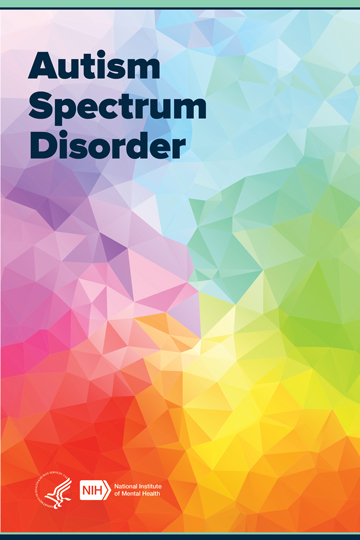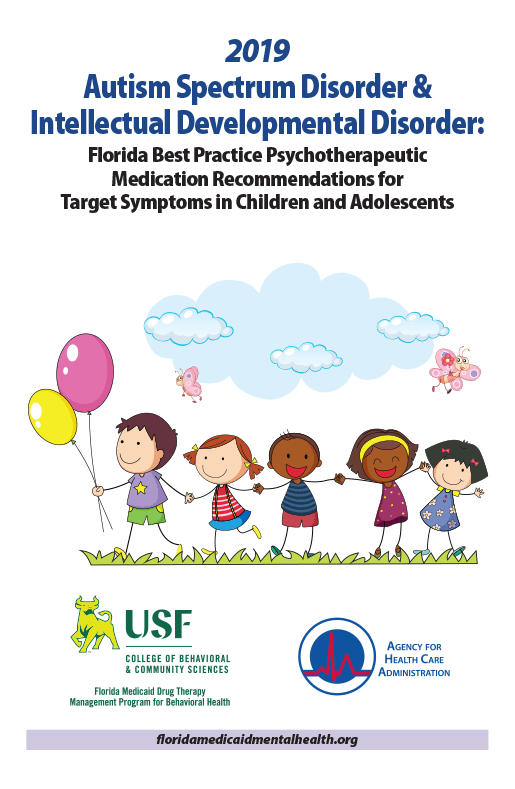Does Autism Behavioral Therapy deliver results? Find out how
Understanding the Influence of Behavioral Autism on Daily Life and Social Communications
You may not recognize exactly how deeply behavioral autism influences day-to-day life and social interactions. Individuals on the range commonly navigate a globe filled up with interaction obstacles and sensory overload. These obstacles can lead to frustration and isolation, affecting their relationships and total wellness.
Defining Behavioral Autism and Its Features
Behavioral autism, usually described as autism range condition (ASD), encompasses a series of problems identified by obstacles in social communication, interaction, and repeated habits. You may see that individuals with ASD often struggle to translate social cues, which can lead to misunderstandings in discussions. They might discover it hard to develop eye contact or engage in little talk, making social scenarios feel frustrating.
Interaction troubles can manifest in numerous ways, from delayed speech growth to a choice for using fewer words. By identifying these traits, you can promote a setting that advertises approval and encourages effective communication, aiding individuals with autism prosper in their daily interactions.
The Range of Autism: Recognizing Irregularity in Actions
Autism range problem (ASD) isn't a one-size-fits-all medical diagnosis; it differs commonly among individuals. You might notice that some individuals with ASD show light signs, while others may encounter extra substantial obstacles. This irregularity can materialize in habits, interests, and sensory sensitivities. You might run into people that are extremely verbal and involve quickly in conversations, while others could favor singular activities or connect non-verbally.
Moreover, the way individuals with ASD react to sensory input can vary substantially; some may be overwhelmed by intense lights or loud noises, whereas others grow in promoting settings. The spectrum likewise consists of differences in social communications; some individuals might have a hard time to translate social cues, while others browse social setups with family member convenience. Comprehending this irregularity is crucial, as it assists you value everyone's special experience and dressmaker assistance to their particular needs, promoting an extra inclusive atmosphere for every person.
Communication Challenges Dealt With by People With Autism
When you interact with individuals on the autism range, you might notice their distinct interaction obstacles. They commonly encounter difficulties with both verbal and nonverbal signs, which can influence their social communications. Recognizing these obstacles is vital for cultivating far better connections and support.

Verbal Interaction Difficulties
Numerous people on the autism range experience verbal interaction problems that can substantially influence their everyday communications. You may find it testing to express your ideas, feelings, or needs plainly. This can result in disappointment for both you and those around you, as misunderstandings take place. You may battle with starting discussions, maintaining a subject, or understanding subtleties in speech. Often, you may choose using straightforward language or repetitive expressions, which can limit your capability to involve in deeper conversations. Your pace, tone, or quantity may not straighten with social expectations, triggering others to misunderstand your intentions. Acknowledging these obstacles can help you and your support network establish approaches to improve communication and promote far better connections with others in your day-to-day live.
Nonverbal Interaction Obstacles
Spoken communication isn't the only challenge individuals on the autism range face; nonverbal interaction obstacles can be equally as considerable. You might find it challenging to interpret body language, faces, and eye contact, which are essential for efficient communication. These challenges can lead to misconceptions or false impressions of social signs, making communications feel overwhelming or complex. You may battle to reveal your own emotions via nonverbal ways, leaving others uncertain of your feelings or intentions. This separate can produce feelings of seclusion and frustration. Identifying these barriers is crucial for cultivating understanding and empathy in your interactions. By resolving nonverbal communication, you can locate methods to enhance your social experiences and boost your total lifestyle.
Social Communication Impacts
Social communications can frequently feel frustrating due to the special interaction difficulties faced by people with autism. Identifying these difficulties can assist you locate methods to enhance communication, such as practicing social abilities in risk-free settings or making use of visual aids. Comprehending your demands allows you to navigate social communications with higher self-confidence and ease.
Social Communication and Connection Building in Autism
While structure relationships can be testing for individuals with autism, recognizing their special perspectives and interaction styles can promote significant links. You may notice that several individuals on the range choose straight communication and may have problem with social cues or little talk. By being uncomplicated in your interactions, you can aid create an atmosphere where they really feel comfortable.
Put in the time to observe and pay attention how they reveal themselves. This insight can direct you in steering conversations more successfully. Taking part in shared rate of interests can also work as a bridge to much deeper links. Whether it's a hobby, a preferred program, or a mutual enthusiasm, these typical strings can open up doors to friendship.
Daily Life Regimen: Navigating Challenges and Methods
Steering daily life regimens can be particularly challenging for individuals with autism, especially when unexpected changes occur. You might find comfort in having an organized timetable, as article it aids you expect what's following. When interruptions happen, it's normal to really feel overwhelmed or distressed. To browse these obstacles, take into consideration applying aesthetic routines or checklists. These devices can give clearness and reassurance.
Establishing a regimen that includes sensory breaks can additionally be advantageous. You can intend short breaks throughout your day to recharge. It's vital to interact with those around you, allowing them recognize your preferences and demands. This aids produce an understanding setting.
Last but not least, technique mindfulness methods to take care of stress and anxiety and stress and anxiety. Straightforward breathing exercises or basing techniques can make a substantial difference. By integrating these approaches, you can enhance your everyday regimen and reduce interruptions, making life really feel a lot more convenient.
Strengths and Capabilities of People on the Autism Spectrum
Recognizing daily life routines is simply one facet of the autism experience. Many individuals on the autism spectrum have impressive toughness and abilities that establish them apart.
Moreover, your memory abilities commonly beam, specifically in locations of passion. Aba Therapist. This propensity for maintaining info can make you an important resource in fields like art, modern technology, or scientific research. You might likewise exhibit solid visual thinking, allowing you to picture complex concepts and fix issues creatively
In addition, your distinct perspective on the globe can promote compassion and understanding in others, enhancing social communications. Accepting these strengths not just increases your self-confidence however additionally assists others appreciate the diverse skills you give the table.
Producing Inclusive Settings for Individuals With Autism
Creating comprehensive environments for people with autism begins with creating sensory-friendly rooms that accommodate their one-of-a-kind requirements. You can additionally foster possibilities for social interaction, assisting to construct relationships and connections. By making these changes, you'll add to an extra inviting environment for every person.
Creating Sensory-Friendly Spaces
While developing sensory-friendly areas, it's vital to assess the special needs of individuals with autism. Begin by picking soothing colors and soft lights to develop a soothing setting. Integrate peaceful areas where people can charge and pull away when overwhelmed. You'll want to decrease loud sounds and interruptions, using soundproof products or white sound machines to help maintain peace. Think about tactile elements like soft materials or fidget-friendly items that can offer convenience. Determine that areas are adaptable, enabling very easy reformation to suit various tasks. Include visual timetables or clear signs to aid people navigate the room with confidence. By thoughtfully integrating these elements, you can develop a welcoming ambience that supports sensory needs and advertises total wellness.
Advertising Social Interaction Opportunities
Creating sensory-friendly areas not just addresses private comfort yet likewise establishes the stage for meaningful social communications amongst people with autism. To advertise these interactions, produce comprehensive environments that welcome participation. Arrange structured activities, like art courses or group games, that urge partnership without frustrating sensory input. Usage aesthetic aids and clear interaction to aid everybody involve conveniently. Urge peer mentoring, matching people with autism with encouraging peers who can assist them through social circumstances. In addition, think about holding routine area events that celebrate neurodiversity, promoting approval and understanding amongst all participants. By applying these approaches, you can enhance social chances, assisting people with autism construct relationships and strengthen their social skills in a safe, welcoming atmosphere.

Frequently Asked Concerns
How Can Buddies Assistance Someone With Behavioral Autism?
You can support a friend with behavioral autism by holding your horses, listening actively, and valuing their limits. Participate in tasks they appreciate, communicate honestly, and develop a comfy environment where they feel valued and comprehended.
What Resources Are Readily Available for Parents of Children With Autism?
You can explore various sources for parents of children with autism, consisting of support system, educational websites, and neighborhood area services. Connecting with various other parents can also provide valuable understandings and try this out shared experiences to assist navigate obstacles.
Can Behavioral Autism Modification In Time?

Yes, behavior autism can transform gradually. You could observe changes in communication, social skills, and habits as your kid grows. Early intervention and assistance often play vital duties in these developing modifications.
Exactly How Do Sensory Sensitivities Affect Life?
Sensory level of sensitivities can make day-to-day experiences frustrating. You may battle with loud noises or intense lights, bring about tension or avoidance. Finding settings that fit your click site needs can greatly boost your comfort and overall life.
What Are Typical Misconceptions About Behavioral Autism?
You could believe behavioral autism just affects communication abilities, but it's even more complex. Several presume people lack compassion or intelligence, which isn't real. Comprehending these mistaken beliefs assists foster acceptance and support for those on the range.
Behavioral autism, frequently referred to as autism range disorder (ASD), includes an array of conditions defined by challenges in social interaction, interaction, and repetitive actions.Social interactions can often feel overwhelming due to the one-of-a-kind communication difficulties encountered by individuals with autism.Designing sensory-friendly rooms not just addresses individual convenience yet likewise sets the stage for meaningful social interactions among people with autism. Urge peer mentoring, pairing people with autism with supportive peers that can assist them with social circumstances. By carrying out these strategies, you can improve social possibilities, assisting people with autism construct relationships and strengthen their social skills in a risk-free, inviting setting.